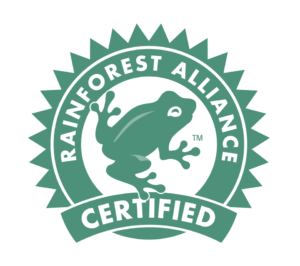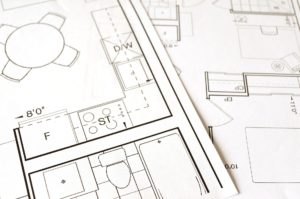When we think of how to live a more sustainable lifestyle, our minds often stray towards organic groceries or eliminating plastic straws, but what about our actual living spaces? Whether it’s your home, your office, or your favorite restaurant, residential and commercial buildings account for one-third of all global greenhouse gas emissions.
The solution: sustainable design.
How do you make a building sustainable? Start small.
Appliances
Faucets, toilets, refrigerators–these are all necessary fixtures with abundant eco-friendly options! Efficiency and sustainable materials are key, and will not only reduce waste and save water, energy, and resources, but will lower your water and energy bills significantly.
 In an article titled “Healthy, Sustainable Interior Design: A Conversation with ASID” (American Society of Interior Designers) by the U.S. Green Building Council, it was found that “at least 2/3 of the U.S. has experienced or is expected to experience water shortages.” One of the easiest solutions to this problem is to reduce water usage by simply switching over to more efficient appliances, from shower heads to faucets. In fact, “if every household in America installed a water-efficient faucet, the U.S. could save 60 billion gallons of water annually. From the commercial perspective, a small office with as few as 10 employees can save about 69,000 gallons of water and $420 in water utility bills in a single year if they replace just one toilet.” The financial and environmental impact is remarkable, and it all relies on merely making sustainable choices.
In an article titled “Healthy, Sustainable Interior Design: A Conversation with ASID” (American Society of Interior Designers) by the U.S. Green Building Council, it was found that “at least 2/3 of the U.S. has experienced or is expected to experience water shortages.” One of the easiest solutions to this problem is to reduce water usage by simply switching over to more efficient appliances, from shower heads to faucets. In fact, “if every household in America installed a water-efficient faucet, the U.S. could save 60 billion gallons of water annually. From the commercial perspective, a small office with as few as 10 employees can save about 69,000 gallons of water and $420 in water utility bills in a single year if they replace just one toilet.” The financial and environmental impact is remarkable, and it all relies on merely making sustainable choices.
Buying appliances that reduce the amount of energy needed for lighting and heating as well as reduce water usage can make a huge impact and add modern beauty to any space. Water-efficient faucets and shower heads, composting toilets, and smart thermostats are all great sustainable appliances to start with. Luckily, with the success of the sustainable design movement, there are countless shopping options that make meeting sustainable standards easy. One outstanding company is Real Goods, a California company with a mission “To empower our customers to live comfortably and with a lower environmental footprint by providing high-quality renewable energy solutions and the best selection of environmentally friendly lifestyle products.” They provide a wide variety of sustainable appliances and products, including eco-friendly refrigerators, heating and cooling devices, composting toilets, and more. But no matter where you are, one of the easiest and most important things you can do is buy Energy Star Certified appliances, as they’re guaranteed to be energy efficient.
Materials
Four letters: GSFT. Green, sustainable, and Fair Trade (GSFT) materials and products are the eco-friendly building blocks needed to create a sustainable space. Everything from fabrics to flooring to walls can be made with GSFT materials.
 Organic, renewable materials are very important in sustainable design, so it’s crucial to choose your materials carefully. Always read the fine print and look out for labels and certifications that signify eco-friendly materials and products. When buying wood products, make sure to look out for the Forest Stewardship Council (FSC) label, which “ensures that products come from responsibly managed forests that provide environmental, social and economic benefits.”
Organic, renewable materials are very important in sustainable design, so it’s crucial to choose your materials carefully. Always read the fine print and look out for labels and certifications that signify eco-friendly materials and products. When buying wood products, make sure to look out for the Forest Stewardship Council (FSC) label, which “ensures that products come from responsibly managed forests that provide environmental, social and economic benefits.”
 Another label to check for is the Rainforest Alliance seal, which guarantees that a product meets “rigorous environmental and social standards.”
Another label to check for is the Rainforest Alliance seal, which guarantees that a product meets “rigorous environmental and social standards.”
Along with sustainable materials, things such as insulation should be kept in mind when choosing what products work best for you. Windows, curtains, and carpets can all affect a building’s insulation and should be chosen carefully to help reduce energy use from heating and cooling functions. Energy used for lighting can also be reduced by using light, reflective colors on walls and furniture to help brighten up a space and decrease the need for artificial lighting. This has psychological benefits as well, as natural light has been found to reduce stress and increase productivity. Using natural and bright materials helps shape an aesthetic sustainable space that is good for both the mind and the planet.
GSFT materials not only reduce environmental impact and lower stress levels, but they improve your physical health as well. According to the U.S. Environmental Protection Agency (EPA), “the air within homes and other buildings can be more seriously polluted than the outdoor air in even the largest and most industrialized cities.” Indoor air pollution can come from furniture and materials that have been treated with chemicals that give off toxins and pollute the air. GSFT materials are toxin-free, and therefore, not just an investment in the earth, but in your health as well. Randy Fiser, CEO of the American Society of Interior Designers (ASID), said, “One of the most important aspects of sustainability is health – health of the indoor environment, of the occupants, of the materials. Interior designers offer specialized knowledge of interior materials and FF&E (furniture, fixtures and equipment) that promote good indoor air quality, are toxin-free, and are water/energy-efficient.” Sustainable design goes beyond basic eco-friendly standards to promote healthy living, truly making it the best choice.
Leaders and Innovators
As sustainable design gains popularity, more and more creative and passionate companies have seen success through sustainability.
One inspiring leader in the world of recyclable materials is ECONYL. ECONYL is a regenerated nylon that is made from “nylon waste from landfills and oceans around the world… It’s exactly the same as brand new nylon and can be recycled, recreated and remoulded again and again.” ECONYL has a mission to promote circular sustainable methods and products that “close the loop.” Their regenerated nylon is used to make various design materials such as carpet yarn and car upholstery. Not only does ECONYL produce an infinitely recyclable and reusable product, but they help reduce landfill and ocean waste that harms the environment and puts ocean life at risk.
 Another leader in sustainable design is Make It Right, an organization that builds green homes and buildings for people and communities in need. Make It Right also maintains a public “Library” online full of information on sustainable design, construction methods, materials used, and more. As the sustainable design movement continues to grow and flourish, more and more information is becoming easily accessible online. This helps educate individuals looking to make green changes as well as professional designers who want to keep learning and improve and share their knowledge.
Another leader in sustainable design is Make It Right, an organization that builds green homes and buildings for people and communities in need. Make It Right also maintains a public “Library” online full of information on sustainable design, construction methods, materials used, and more. As the sustainable design movement continues to grow and flourish, more and more information is becoming easily accessible online. This helps educate individuals looking to make green changes as well as professional designers who want to keep learning and improve and share their knowledge.
Sustainable design is focused on reducing environmental impact and promoting waste reduction, longevity and flexibility, and healthy environments. This in turn leads to reduced utility bills, less toxins and chemicals, and a space that promotes health and happiness. Simply put, sustainable design is the future and it has the potential to not only create a beautiful space to live or work in, but to thrive in.
Written by: Katie Cohen
References:
About Real Goods. (n.d.). Retrieved from https://realgoods.com/about-us
Easton, J. (2012, July 11). Healthy, Sustainable Interior Design: A Conversation with ASID. Retrieved from https://www.usgbc.org/articles/healthy-sustainable-interior-design-conversation-asid
ECONYL. (2018, May 15). About us. Retrieved from http://www.econyl.com/about-us/
ECONYL. (2018, May 09). Interiors. Retrieved from http://www.econyl.com/interiors/
EPA. (2018, April 27). The Inside Story: A Guide to Indoor Air Quality. Retrieved from https://www.epa.gov/indoor-air-quality-iaq/inside-story-guide-indoor-air-quality
Forest Stewardship Council. (n.d.). Certification. Retrieved from https://us.fsc.org/en-us/certification
Hayles, C. S. (2015, April 03). Environmentally sustainable interior design: A
snapshot of current supply of and demand for green, sustainable or Fair Trade products for interior design practice. Retrieved from https://www.sciencedirect.com/science/article/pii/S2212609015000138
Home. (n.d.). Retrieved from http://makeitright.org/
Make It Right. (n.d.). Library. Retrieved from http://makeitright.org/what-we-know/library/
Make It Right. (n.d.). How We Build. Retrieved from http://makeitright.org/how-we-build/








Thanks for another wonderful post. Where else could anyone get that type of info in such an ideal way of writing? I have a presentation next week, and I’m on the look for such information.
Really Appreciate this update, can you make it so I get an update sent in an email whenever there is a fresh update?
You completed a few good points there. I did a search on the subject matter and found nearly all folks will go along with with your blog.
One thing I’d like to say is that car insurance canceling is a dreaded experience and if you are doing the right things as being a driver you’ll not get one. Lots of people do have the notice that they’ve been officially dropped by their own insurance company and many have to fight to get supplemental insurance after a cancellation. Affordable auto insurance rates are generally hard to get after a cancellation. Knowing the main reasons with regard to auto insurance termination can help drivers prevent sacrificing one of the most vital privileges out there. Thanks for the thoughts shared by your blog.
I am always browsing online for tips that can facilitate me. Thank you!
I have recently started a blog, the info you offer on this website has helped me tremendously. Thanks for all of your time & work.
One more issue is really that video gaming became one of the all-time main forms of excitement for people of all ages. Kids participate in video games, and adults do, too. Your XBox 360 is one of the favorite games systems for individuals that love to have hundreds of games available to them, and also who like to learn live with other individuals all over the world. Thank you for sharing your thinking.
Explore top-notch airport transportation at airporttransferdfw.com. Our luxury car service offers premium travel to and from airports. Enjoy the pinnacle of comfort and style in our high-end vehicles. Book now for a deluxe and reliable travel experience that caters to your schedule and preferences.
DFW’s luxury car service is perfect for those desiring an extravagant travel experience, be it business professionals or wealthy tourists seeking opulence.
Embark on group adventures with Washington DC’s trusted charter bus services. From sightseeing tours to corporate events, reliable tour bus companies cater to diverse travel needs. Elevate your experience with KV Limo’s luxurious transportation offerings.
Discover convenient transportation from Nassau Airport to Warwick Paradise Island with options like airport shuttle services, private transfers, and taxis. Compare costs, explore Warwick Paradise Island transportation choices, and plan your seamless journey for a stress-free arrival at your destination.
Airporttransfernassau.com is the place to find Nassau Airport to The Cove Atlantis transportation and rates. We offer safe, reliable, and professional transportation services from Nassau Airport to The Cove Atlantis for all your needs!
Bahamas Premium Transfers is proud to serve the island of New Providence with professional transportation services.
Experience hassle-free travel with Burlington Airport Taxi, offering reliable services like Burlington to Pearson Airport taxi and limo options. Count on us for punctual and comfortable airport transportation in Burlington.
Woodstock Taxi services offer reliable transportation in Woodstock, Ontario. With a fleet of Woodstock Taxis, we ensure efficient and safe commuting for residents and visitors. Count on us for all your local transportation needs.
Unlock convenience with our specialized Airport Transportation from Buffalo to Mississauga. Whether you prefer a lavish limo or a convenient taxi, we provide reliable services catering to your needs. Your seamless journey awaits!
Rent a professional limousine service in Dubai with safety equipments
Enjoy seamless and reliable airport transportation in Dubai with Mercedes Sprinter Dubai. Our dedicated services guarantee a comfortable and hassle-free journey to/from Dubai airports. Travel in luxury with our fleet of Mercedes Sprinter vans and professional drivers. Experience door-to-door service, exceptional comfort, and impeccable customer care. Trust us for your Dubai airport transportation needs.
We are dedicated to providing quality Luxury airport transfers, including comfortable and reliable Rolls Royce Airport transfer services. We service all over Dubai city.
Little Stars Travel offers Dubai City Ride services, making city exploration convenient and enjoyable. With their professional chauffeurs and comfortable vehicles, you can effortlessly discover Dubai’s attractions and landmarks while experiencing top-notch transportation. Whether for tourism or business, their services ensure a smooth and delightful journey.
When you’re arranging a journey from Dubai to Abu Dhabi, it’s critical to factor in transportation. Although there are many possibilities, selecting Limo UAE is an excellent decision for multiple reasons. It provides not only a lavish and pleasant environment but also a plethora of advantages that simply can’t be matched by other travel options.
Elevate your NYC experience with deluxe limousine rentals and luxury chauffeur services, providing unparalleled comfort and sophistication for your transportation needs.
Elevate your airport transfers with our VIP Mercedes Sprinter Airport Services. Offering comfort, space, and luxury, our personalized shuttle service ensures a seamless journey to and from Chicago airports. Experience the ultimate in comfort and convenience with us.
Los Angeles Car Service provides chauffeur-driven rides for weddings, ensuring a stylish and stress-free experience on your special day.
Experience stress-free travel with Airport Transfer DFW. Our Dallas/Fort Worth International Airport transportation service offers a fleet of luxurious sedans, SUVs, and vans, driven by experienced chauffeurs. Whether it’s an early morning or late-night flight, our 24/7 availability ensures timely arrivals. Enjoy transparent pricing, professional service, and a seamless journey to your destination. Your travel, our priority.
Black Car Service In Dallas Fort Worth is a professional chauffeur service that provides luxury transportation for business or pleasure. Black car services are typically more expensive than traditional taxi or limousine services, but offer a higher level of service and comfort.
Nassau Airport to Atlantis – We’re excited to be able to provide professional transportation services from Nassau Airport to Atlantis and Paradise Island!
Airport transfers service Nassau Bahamas providing express transportation (Private Hire), services for to and from Bahamas Airports, Bahamas Cruise Ports to and from anywhere in the Bahamas.
Blue Mountain Airport Taxi ensures smooth travel with services like Pearson Airport taxi to Blue Mountain and Toronto to Blue Mountain bus options. Rely on our expertise for convenient Blue Mountain cabs and enjoy stress-free transportation to your destination.
Experience seamless travel between Buffalo and Hamilton with our dedicated Airport Limo and Taxi Services. From Buffalo Airport to Hamilton, enjoy punctual transportation with our luxurious limos and reliable taxis. Book now for a comfortable and stress-free journey.
Unparalleled elegance awaits with our Black Luxury Car Service in Chicago. From executive sedans to black SUVs, we offer premium transportation for all occasions. Experience luxury, style, and professionalism with our chauffeur-driven black car service.
Streamline your journey from LAX to Orange County with our efficient transportation services. Trust our dedicated SNA airport transportation for a seamless and comfortable transfer between major Southern California destinations.
Discover a new level of airport travel through our exclusive black car service designed for Dallas/Fort Worth International Airport. Immerse yourself in the elegance of our premium black cars and SUVs, seamlessly combining luxury with comfort. With our dependable and timely transfers, we cater to your agenda, delivering an unparalleled travel journey. Secure your booking today to experience sophistication and convenience intertwined for your airport transportation requirements.
Connect effortlessly between Buffalo and Oakville with our premier Airport Limo and Taxi Transportation. Whether it’s a lavish limo or a convenient taxi, we provide reliable services tailored to your needs. Experience comfort and convenience on your journey from Buffalo to Oakville.